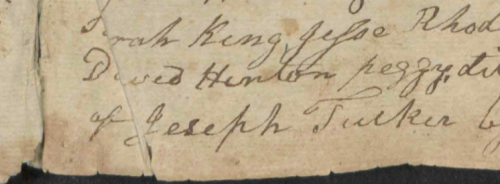Transcription Conventions
ZSR Special Collections and Archives partners with From the Page to facilitate transcription of historic documents from our collections. Through this platform, volunteers review scans of handwritten material and word-process the text. Ultimately, this work produces documents that are easier to access, read, and keyword search. Current projects include: Early Wake Forest History and North Carolina Baptist Church Records.
This subject guide outlines preferred practices for transcribing documents from SCA.
The Basics
- Spelling
- Always use original spelling. Even if a common word is misspelled, transcribe it as written. This helps to maintain the authenticity of the document and reveals the voice of the original author.
- Capitalization
- Always transcribe original capitalization as written. Capitalization can serve as a “clue” to the historical context of the document or illuminate what the author thought was important to emphasize.
- Punctuation
- Use original punctuation for the same reasons outlined above.
- Line Breaks
- Hit Enter to add line breaks where they exist on the page being transcribed. Two returns for a new paragraph, whether indicated by a blank line or by indentation in the original.
Illegible Text
If you cannot discern a word, type [illegible] in brackets. If it is semi-legible or you think you may know the word, type the word with [?] added immediately after.
- Example of a completely illegible word in a sentence would be:
Mr. John Smith was [illegible] in the year 1913.- Example of a partly legible word in a sentence:
A letter was sent to Jane Doe on the fifth [?] night of February 1933.
For more tips, see From the Page blog post “How Do I read Old Handwriting?“
Modified Text
- Underlined text
- Underline text as written in the document by wrapping it in tags. Type <u> when the underline text begins and </u> when the underlined text ends:

<u>Delilah Baccus</u> by <u>Experience</u>- Additions
- For text inserted between lines (marginalia), write <add> before the additional text, and </add> when the additional text ends:

Reconciling ^ <add>meeting</add>- Crossed-out text
- If a sentence or word in a document is crossed out, write <strike> before the crossed out portion of the sentence starts and </strike> after the crossed out portion:

<strike>Joseph Tucker</strike> Pleasant Tucker- Gaps in text
- When a document has faded ink, water damage, folds, or other types of issues preventing you from seeing the full word it can be transcribed with the <gap> function. Write <gap> before the missing text begins and </gap> when the missing text ends:

<gap>...</gap> rah King, JesseD <gap>...</gap> vid Hinton
Advanced Conventions
- Tables
- Please follow the formatting seen on Table Encoding when transcribing a table.
- Indexing
- Use double braces to link subjects. Example: [[Jane Doe]] will link the text “Jane Doe” to the subject Jane Doe, while [[Jane Doe|Jane]] will link the text “Jane” to the subject Jane Doe. “Autolink” will suggest certain words that could be linked. We recommend that linking be left to an editor after the initial transcription is made. More help….
Need additional guidance? Email us at archives@wfu.edu with questions about transcribing our From the Page collections.